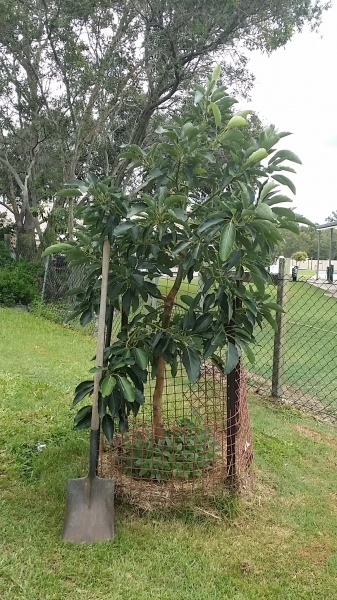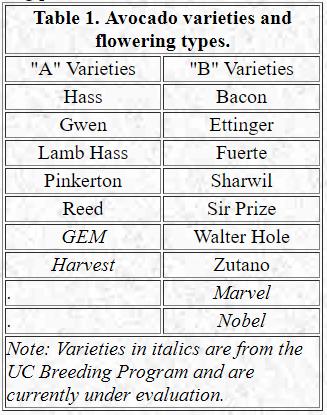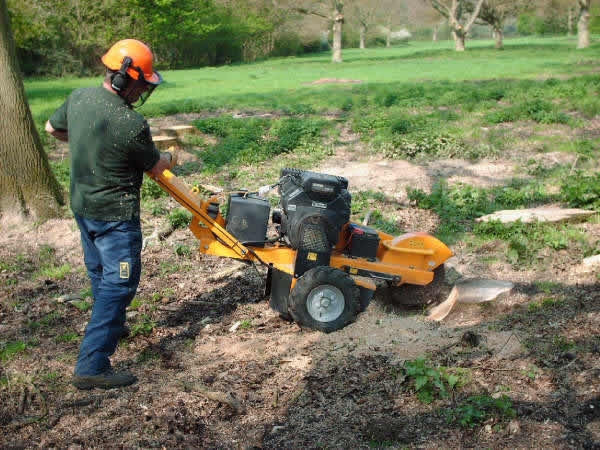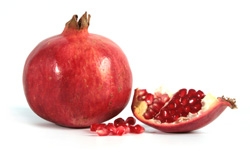Updated Version of 12/24/18 blog to correct errors
Advice for the Home Gardener from the Help Desk
UC Master Gardener Program of Contra Costa County
Client's Request: I would like to plant an avocado tree that has the following specifications: I live in West County where it is cool and foggy and I want a dwarf tree that is self-pollinating. Also, how far from my existing avocado tree can I plant my new tree?

Persea americana "Wurtz"
Pollination: While avocado trees self-fertilize and produce fruit, yields should increase if both a Type A avocado tree and a Type B avocado tree are planted in order to increase the chances for successful pollination. The avocado tree has both functional male and female organs. The male floral organ (stamen) which produces pollen, is comprised of the anther and filament. The female floral organ (pistil) which receives the pollen, is comprised of the stigma style and ovary.
The avocado exhibits a type of flowering behavior known as “synchronous dichogamy.” An individual flower will open for two days and the timing of the male and female phases is distinct. There are two flowering types, referred to as “A” and “B” flower types. “A” varieties open as female on the morning of the first day. The flower closes in late morning or early afternoon. The flower will remain closed until the afternoon of the second day when it opens as male. “B” varieties open as female on the afternoon of the first day, close in late afternoon and re-open in the male phase the following morning. This flowering behavior is believed to promote cross-pollination since the male and female phases of an individual tree occur at different times. It is believed that the interplanting of complimentary flower types can boost fruit set and yield by making pollen more available.
The following identifies common varieties for each flowering type:

Table 1 of http://ucavo.ucr.edu/Flowering/FloweringBasics.html
You mentioned that you have an existing avocado tree. If you know which flowering type your tree is, then plan to plant another tree of the other flowering type, so you will be more successful in cross-pollinating both trees.
You also asked how far apart to plant the two trees. You can plant the new tree anywhere in the yard and cross-pollination should occur. Depending on the size of your existing tree, be aware that you don't want to plant the new tree in the shadow of the existing tree. Here is a link that provides information on avocado tree flowering behavior:
http://ucavo.ucr.edu/Flowering/FloweringBasics.html
In general, avocado trees do best at moderately warm temperatures (60‒85 degrees F.) with moderate humidity. Optimum fruit set occurs from 65‒75 degrees F. Cooler or warmer temperatures are less ideal. They can tolerate temperatures, once established, of about 28‒32 degrees F with minimal damage. Plant your tree in March through June. If you plant during the summer, there is always the risk of sun damage, because avocado trees don't absorb water very well when they are young. Plant in a spot protected from wind and frost, and planting in full sun is best. The avocado is a shallow-rooted tree with most of its feeder roots in the top six inches of the soil, so give it good aeration. Its root system is very sensitive, and great care should be taken not to disturb it when transplanting. Avocado trees like the pH of the soil to be about 6‒6.5. If you have heavy clay soil, elevate the tree in a mound for better drainage, making the mound 1‒2 feet high and 3‒5 feet around. Here is a link with information on growing avocado trees:
http://homeorchard.ucanr.edu/Fruits_&_Nuts/Avocado/
In my research for finding a type of dwarf avocado tree, I found this link:
http://mgorange.ucanr.edu/Edible_Plants/?uid=127&ds=530
The Wurtz avocado tree (flowering type A) is sometimes referred to as Little Cado and it is the only true dwarf variety of avocado. It will consistently produce good fruit from May to September. Compared to other avocado trees which can grow up to 80 feet, a Wurtz grows to about 10 feet. It is a hybrid created from the Mexican and Guatemalan avocado species, and produces abundant fruits within one to two years of planting if it is a grafted tree. Grown in the right conditions, and properly cared for, a Wurtz avocado tree will do well in mild-winter areas of California. While it can tolerate temperatures as low as 25 degrees F, it should be kept in a warm environment with protection against strong winds and frost. A young tree, one that is less than 12 months old, requires shelter from direct summer sunlight or the stems and bark will burn. If its trunk is exposed to sun, it will also be important to protect it from sunburn by painting it with a 50:50 mix of white interior latex paint and water. After several years the tree will grow enough foliage to shade itself from the sun.
If the Wurtz avocado tree is cared for properly, it will start growing flowers for pollination sometime between January and March within one to two years of planting (if it is a grafted tree). Purchasing a grafted tree from a nursery is the easiest way for the home gardener to have a fruit-bearing tree. Once the flowers are pollinated, the Wurtz bears fruit that ripens between May and September. The fruits are dark green and medium in size ranging from 6‒12 ounces. They have thin, shiny skins with a small seed. The fruits have been rated by growers as having a good and consistent flavor with an oil content of 16%. Avocados will not ripen while still on the tree. Harvest when fruits are of mature size and still firm. They will ripen in one to two weeks at room temperature.
Good luck in growing your next avocado tree and let us know if you have any further questions.
Help Desk of the UC Master Gardener Program of Contra Costa County (BY)
and Allen Buchinski for correcting the original's copy errors and the editor's misses.
Note: UC Master Gardeners Program of Contra Costa's Help Desk is available almost year-round to answer your gardening questions. Except for a few holidays (e.g., last 2 weeks December), we're open every week, Monday through Thursday for walk-ins from 9:00 am to Noon at 2380 Bisso Lane, Concord, CA 94520. We can also be reached via telephone: (925) 608-6683, email: ccmg@ucanr.edu, or on the web at http://ccmg.ucanr.edu/Ask_Us/. MGCC Blogs can be found at http://ccmg.ignore.edu/HortCoCo/ You can also subscribe to the Blog.
From the Help Desk of the
UC Master Gardener Program of Contra Costa County

UC MGCC's Help Desk Response: Thank you for contacting the UC Master Gardener Program of Contra Costa County regarding the remaining roots after removal of your large trees.
Based upon our research about invasive tree-root problems, there seems to be no real difference between ash or elm trees in the strength of their roots. Many other types of trees' roots are much more aggressive.
Regardless, these trees do have extensive roots that will try to live on reserve sugars for awhile. The roots will send up shoots as long as they are able, about a year or so, and if the leafy shoots find sun, they will try to grow. However, without sun, water and an unimpeded growing space, the weakened roots will eventually fail. To eliminate the trees from your garden, do not allow the shoots to succeed as that will create new sugars via photosynthesis from sunlight exposure.
You will have to be vigilant for a year or two, cutting back the shoots and sprouts as they pop up. Those severed roots under the foundation & walkways cannot live after their food reserve is gone.
Below is a a link to the University of California's Pest Note about woody weeds - which includes tree roots. It explains various methods to keep those tree shoots down and out.
http://www.ipm.ucdavis.edu/PMG/PESTNOTES/pn74142.html
Please do not hesitate to contact us again for garden assistance.
Help Desk of the UC Master Gardener Program of Contra Costa County (MKW)
Don't miss our 2016 Great Tomato Plant Sale:
http://ccmg.ucanr.edu/EdibleGardening/GreatTomatoPlantSale/
Note: The UC Master Gardeners Program of Contra Costa's Help Desk is available year-round to answer your gardening questions. Except for a few holidays, we're open every week, Monday through Thursday for walk-ins from 9:00 am to Noon at 75 Santa Barbara Road, 2d Floor, Pleasant Hill, CA 94523. We can also be reached via telephone: (925) 646-6586, email: ccmg@ucanr.edu, or on the web at http://ccmg.ucanr.edu/Ask_Us/ MGCC Blogs can be found at http://ccmg.ucanr.edu/HortCoCo/ You can also subscribe to the Blog (http://ucanr.edu/blogs/CCMGBlog/).
Advice From the Help Desk of the
UC Master Gardeners of Contra Costa County
MGCC's Help Desk Response: Thank you for your call requesting information on pomegranate tree propagation. The answer to your question is yes! You can take cuttings soon (February in our area), root them and make (eventually) fruiting trees to give to your neighbors. And with some care, it doesn't appear to be too hard. Lucky neighbors!
Following is a link to an excellent and free downloadable “book” on pomegranates on the University of California website, "The Incredible Pomegranate”. Chapter VI, starting on page 65 provides detailed instructions on taking cuttings and rooting them successfully. There is also a wealth of information on all aspects of the pomegranate, from growing to health benefits and recipes. http://ucanr.edu/sites/Pomegranates/files/164443.pdf
|
THE INCREDIBLE POMEGRANATE - University of California ucanr.edu THE INCREDIBLE POMEGRANATE PLANT & FRUIT By Richard Ashton With Barbara Baer & David Silverstein Third Millennium Publishing A Cooperative of Writers and Resources |
MGCC wishes you well with your pomegranate propagation project… and Happy Holidays too!
Help Desk of the UC Master Gardeners of Contra Costa County
Noe: The UC Master Gardeners of Contra Costa's Help Desk is available year-round to answer your gardening questions. Except for a few holidays, we're open every week, Monday through Thursday for walk-ins from 9:00 am to Noon at 75 Santa Barbara Road, 2d Floor, Pleasant Hill, CA 94523. We can also be reached via telephone: (925) 646-6586, email: ccmg@ucanr.edu, or on the web at http://ccmg.ucanr.edu/Ask_Us/ MGCC Blogs can be found at http://ccmg.ucanr.edu/HortCoCo/ You can also subscribe to the Blog (http://ucanr.edu/blogs/blogcore/blogroll.cfm).
Help for the Home Gardener from the Contra Costa Master Gardener Help Desk
Client's Problem:
CCMG Help Desk Response:
Thank you for contacting the Contra Costa Master Gardeners with your pomegranate question.
Although pomegranates are known to be drought resistant, they do require even moisture during the growing season to set fruit properly. Our historic drought over the past 3 years has affected many plants and trees ability to cope. How are you irrigating your tree? Are you on drip or sprinkler? Are you watering throughout the root zone of the tree or only close to the trunk? Is the rest of your yard that is close by the tree irrigated? Also, does the tree receive at least 6 hours of sun or have other trees shaded out your pomegranate over the years since it was planted? Because of the drought, the soil is very depleted of moisture, even clay soils which retain water for much longer than other soil types are often quite depleted.
Since you mentioned that the tree drops its flowers in the spring there most likely is some cause for the flowers dropping at that time. Besides wind and/or frost, the flower drop could be moisture stress because of the lack of rain earlier. Checking the moisture level of your soil at flowering time would be beneficial. Using a soil probe to check the moisture or just digging down 6 to 12 inches and checking how moist the soil is by hand are the best methods. The following website will explain how to check moisture content by look and feel. http://www.cdpr.ca.gov/docs/county/training/inspprcd/handouts/soil_moist_feel_test.pdf
Mulching your tree will also help with moisture issues. Placing 2 to 4 inches of mulch throughout the root zone of your tree is appropriate, but also provide 12" of clearance around the trunk.
You mentioned that the tree was sending out lots of branches from the lower trunk. Are these suckers coming up from the root zone or actual branches coming off the main trunk?. Does your tree have one central trunk or many trunks coming up from the ground? If the tree is spending a lot of energy making vegetative growth it may not have enough left over to spend on fruit. Removal of water sprouts and/or branches below the bud graft (if any) is also recommended. See the links below for more information on this.
You also mentioned that your tree is 30-40 years old. Some varieties of pomegranate decline after 15 to 20 years of production, although others can live for 100+ years. Most slow down production in the 20-25 year range.
It appears that it may be several reasons for your lack of fruit production. Drought conditions, lack of irrigation and age of the tree being the most likely.
For more information on Pomegranate care please refer to the following websites, including an online book on pomegranate care.
http://www.ipm.ucdavis.edu/PMG/GARDEN/PLANTS/pomegranate.html
http://ucanr.edu/sites/Pomegranates/files/164443.pdf
Hope that information helps you. Please feel free to ask more questions if need be. Best of luck with your pomegranate tree.
Contra Costa Master Gardeners Help Desk
Editor's Note: The Contra Costa Master Gardener Help Desk is available year-round to answer your gardening questions. Except for a few holidays, we're open every week, Monday through Thursday from 9:00 am to Noon at 75 Santa Barbara Road, 2d Floor, Pleasant Hill, CA 94523.
We can also be reached via telephone: (925) 646-6586, email: ccmg@ucanr.edu, and we are on the web at http://ccmg.ucanr.edu/

